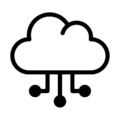Space management analytics provide a variety of different benefits for universities, all of which can have a meaningful and positive impact to ensure operations are managed better. Implementing a good space management system can help your campus run smoother, improve experiences for students and faculty, save money and increase efficiency and effectiveness across your university.
Here are 10 impactful benefits of university space management where analytics can drive efficiency.
Benefits of University Space Management Analytics
1. Student no-shows and attendance
With the right analytics in place, you will be able to quickly determine which classes typically have a lot of student absences. Conversely, you will be able to tell which courses are regularly full or over capacity. This will allow you to ensure you are selecting the correct space for each class, which in turn means you will be making much better use out of your space. For example, if you determine the largest lecture hall on your campus is the site used for a class that only fills half the room (identified by actual occupancy from data), you can move the class, free up space for another course and save money on utilities and facilities.
2. Demand on teaching space
Knowing what space is available at a given time through analytics will allow space managers to effectively allocate areas for teaching, one to one session’s or hold office hours to complete their own work or research. This is an important factor in implementing a space management strategy as traditional offices and fixed seating become redundant. In another example, it may no longer make sense for your campus to have a space specifically reserved for a club or activity that meets one evening a week for an hour and is otherwise unoccupied for most of the remaining time.
3. Demand on communal spaces
Analytics will also support the utilization and allocation of social and communal spaces. This can help universities design space for students looking for socialization, where students need to work together on a group project, focus on homework or a presentation, eat with friends, hold a recreational activity, or socialize with classmates. The beauty of analytics is it will allow you to cater directly to your students with factual data on usage.
4. Cost control
As everyone who manages a budget will understand, anything that can help save money is a tremendous benefit, which is why space management analytics is a worthy undertaking. This could mean reaping savings on real estate costs by subleasing square footage if spaces are no longer needed or used at the levels they once were, or it could mean improving your bottom line by reducing costs on utilities such as heat, air conditioning and electricity in certain spaces at certain times.
For example, if you determine that the heat in the winter, air conditioning in the summer and electricity all year are never adjusted for nights, weekends, or breaks when the campus is closed, you are paying much higher utility expenses than necessary. University space management analytics can also help you to reorganize how existing spaces are used, which could mean the ability to host more classes at the same time so spaces can then be reallocated for other activities in a manner that lead to additional revenue. For example, you may find that a science course typically offered in the evening because of space concerns could instead be held during the day in a different lab, opening the space to rent to a community group at night as a new revenue stream.
5. Meeting environmental goals
A benefit that may not be at the top of your mind but is certainly important is the fact that analytics offers the ability to help your campus go green. Just as analytics can save money on utilities by informing you of occupancy levels at off-peak times, obtaining the data to learn how and when your space is used will allow you to reduce your carbon footprint by cutting down on lighting, heating, and cooling.
6. Student experience
While higher education is a multibillion-dollar industry that employs millions of people, it is important to always be mindful of the fact that first and foremost colleges and universities exist to educate, train, and serve students. Accordingly, your campus should be designed in such a manner that puts student needs front and center. Space management analytics will provide you with data that can improve the student experience. This will lead to happier students, which in turn will create increased demand for your university at a time of heightened competition and help with recruitment.
For example, if you determine that student attendance drops off substantially for classes held before 9am, it is not in the best interest of your students, faculty or staff to have half empty classrooms. Your students are sending a clear message that current academic schedules are not optimal and responding by adjusting the start times will meet student needs. Similarly, if your dining halls close at 9 pm but data shows athletic practices and club activities do not end until 8:30pm on the other side of campus, a large contingent of students may not have an option to eat dinner. Lengthening the hours your dining halls are open to 9:30 will mean students have somewhere to eat after practice or an activity. In both examples, space management analytics will have informed you to make adjustments that improve the student experience.
7. Student recruitment
Optimizing your space utilization may mean you can increase the number of students on campus and in classes. By knowing where and how students use spaces within your university at a given time, you can make data-driven decisions based on a forecast of patterns and trends. You may be surprised to learn that reallocating resources opens classroom space and resources that can accept an additional number of students that will increase your revenue.
8. Transform space and time management roles
Being equipped with the data to determine how effective your space is being used will help you on the path towards modernizing your university and space management department. At best without a tool or data, space management is a process of human awareness, knowledge acquired throughput the years of experience in a certain site or campus or guesswork. When we say that data and analytics will transform space management and timetabling roles, we mean it literally.
9. Blended, hybrid learning
Higher education faced a similarly dramatic upheaval during the pandemic with no face-to-face learning taking place overnight. While online learning is not new to colleges and universities, there has never been such an immediate shift from traditional in-person teaching to remote education as occurred because of the pandemic. After higher education institutions were forced into online learning for the conclusion of the spring 2020 semester, the 2021 academic year saw a mixture of in-person, hybrid, and remote learning.
Just as hybrid working has emerged as a popular choice in the corporate world for companies returning to work after the pandemic, hybrid learning is also a new normal in higher education. Space management analytics will provide you with the tools you need to manage your student population and to drive online learning as well.
10. Manage ethical issues such as food wastage
Understanding trends and patterns in student occupancy levels are another enabler to saving on costs associated to food and drink services such as the canteen. If the population of the university is high during Tuesday to Thursday but low on Monday and Friday, occupancy data will highlight this and allow you to reduce food ordering costs throughout the week, and help reduce food preparation on given days, meaning supplies last longer.
These are just some of the objectives you can meet by using data and analytics to drive space management decisions, increase student experience and deliver modernisation to the way the university operates.






















